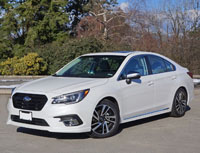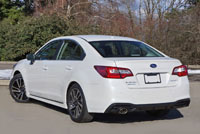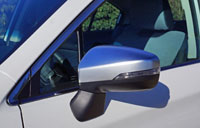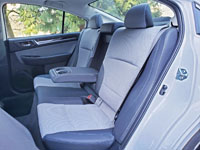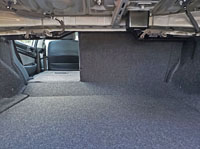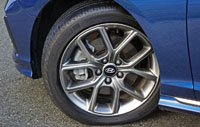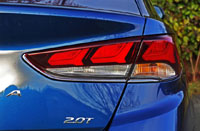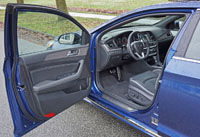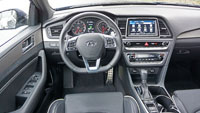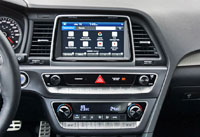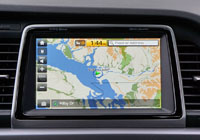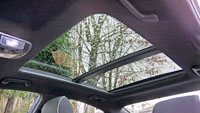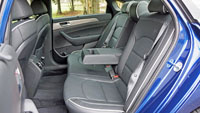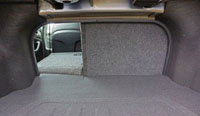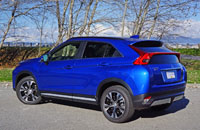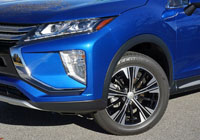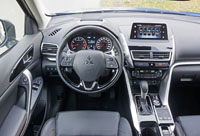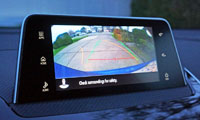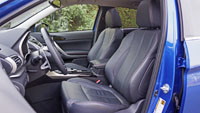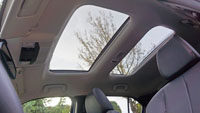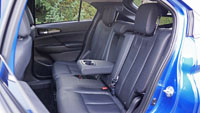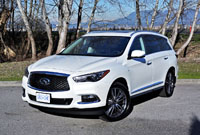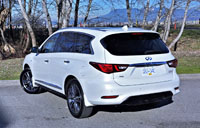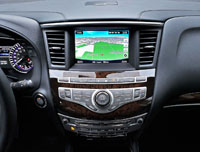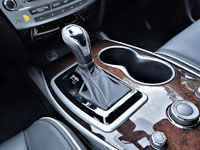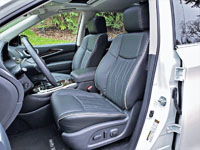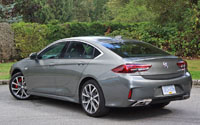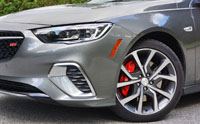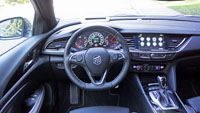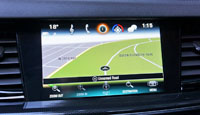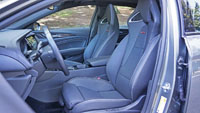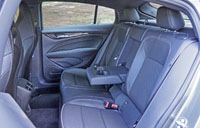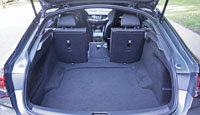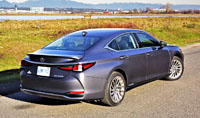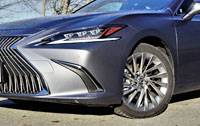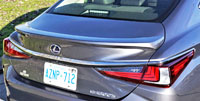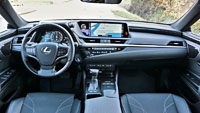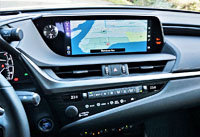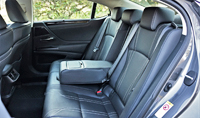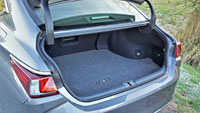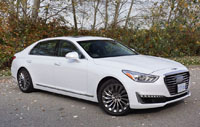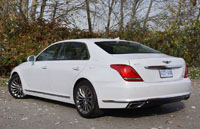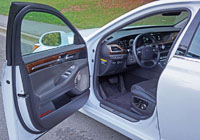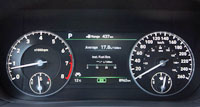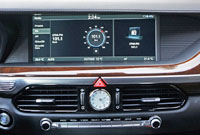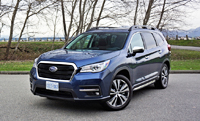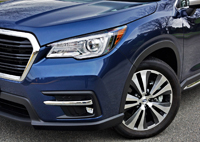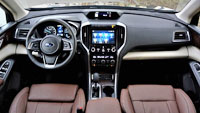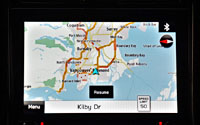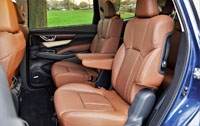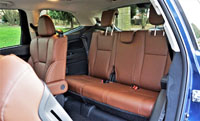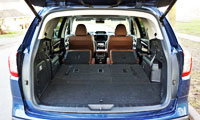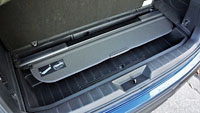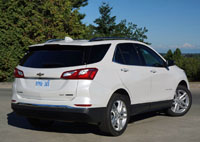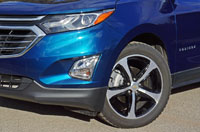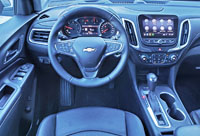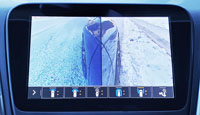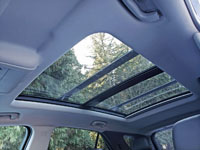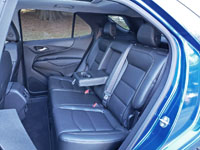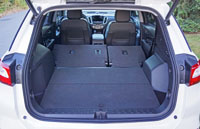
Now that the entirely redesigned 2020 Escape is arriving at Ford’s Canadian retailers, we’d better say a final goodbye to the third-generation Escape that’s done a very good job of serving the automaker as well as many of its loyal fans for the past six or so years. This outgoing version underwent a dramatic mid-cycle upgrade for the 2017 model year, and now the blue-oval brand has brought something new to contemplate in the compact crossover class.
For some, the best reason to get excited about a redesigned model is the opportunity to save money on the old one, and being that this 2019 Escape is still an excellent SUV, and that Ford retailers continue to have some in stock, such options should be considered. During my research for this review, which included pricing and features info found right here at CarCostCanada, I learned that $1,200 in additional incentives was available at the time of writing, and that’s over and above any personal discount you might be able to negotiate with your local retailer, and while this knowledge will certainly help when you begin to talk business, CarCostCanada also provides dealer invoice pricing that could save you even more.

A quick glance at CarCostCanada’s 2019 Escape page will show that it’s unchanged from the 2018 model. The 2018 is identical to the 2017 model as well, with respect to all trims but the SEL that arrived last year. If you want more clarity, take a look at my 2017 Ford Escape Titanium AWD Road Test that shows an identical SUV to my 2019 tester, even down to their Ingot Silver colour. Of course, Ford provides the choice of seven additional colours for 2019 buyers, with no-cost options including vibrant alternatives like Sedona Orange and Lightning Blue, while $450 Ruby Red and $550 White Platinum give the Escape a premium-like upscale demeanour.
This 2017-2019 Escape’s grille design didn’t work for me as much as its 2013-2016 forebear did, the latter a completely original and even futuristic look when introduced. I remember how it initially turned my head, not really certain what to think at first, yet warming up to its unusual design quickly. It made sense that Ford needed to change the design, both because of a need for something new and the automaker’s requirement to visually align its crossover SUV lineup (the Escape took design elements from the Edge of the era), but nevertheless Escape sales have slowed somewhat in recent years, with the Toyota RAV4 and Honda CR-V now owning first and second respectively, not necessarily due to styling mind you.

Just four years ago the Escape was the compact SUV segment’s bestseller, a spot it had been holding for years. In fact, looking a couple of years further back shows the Escape nearly doubling the RAV4 and CR-V’s yearly sales, but it’s been on a downward trajectory ever since its mid-cycle refresh, from a high of 52,198 sales in 2014 to 47,726 in 2015, which incidentally was the last time it topped the category. It fell further to 46,661 units in 2016, when the RAV4 jumped up to first place, and then in 2017 it managed a bit more to 47,880 examples, but the RAV4 and CR-V grew their sales even more, both passing 50,000 units. The two Japanese SUVs kept pulling in more and more new buyers through 2018 too, when each models’ deliveries neared 55,000 units, yet the Escape could only muster 43,587 sales that year, while at the close of Q3 2019 Ford’s little SUV that could managed just 30,817 new customers to the CR-V’s 43,464 and RAV4’s 49,473, the completely redesigned Toyota targeting yet another banner year.
Truly, the Escape is beginning to show its age, particularly when sidled up next to the new RAV4, not to mention when placed beside the totally redesigned 2020 Escape that Ford hopes will cause its once much stronger customer base to return, but the outgoing model is nevertheless a very competent compact SUV that should be available for big time savings. Of course, you may not have many options when it comes to exterior paint, while a choice of trims will be decided by remaining stock, which means you should probably get a move on if you want something specific.

When model year 2019 began, the Escape was available in base $26,399 S trim, as $29,349 SE and $30,849 SEL models (the latter designation added this year as noted earlier), and finally in top-line $37,699 Titanium trim. The Titanium gets all-wheel drive standard, whereas AWD is available with the SE and SEL for an additional $1,500, and the S only comes with front-wheel drive.
If your not confused yet, just wait as the 2019 Escape provides the choice of three gasoline-fed four-cylinder engines, and oddly not a one is electrified despite this model being first to market with a hybrid. Base S trim still uses Ford’s 12-year-old 2.5-litre four that’s good for 168 horsepower and 170 lb-ft of torque, although despite these being respectable output numbers most Escape buyers will ante up for one of the automaker’s turbocharged Ecoboost engines, which include a 1.5-litre mill capable of 179 horsepower and 177 lb-ft of torque, standard in SE and SEL trims, and a 2.0-litre version making a very energetic 245 horsepower and 275 lb-ft of torque, this one standard with my Titanium tester and available with mid-range SE and SEL models. Therefore, as you can probably imagine, your local Ford dealer won’t have all combinations available in the exact colour you want, but hopefully you’ll be able to find something that mixes and matches enough of the features you’re looking for to make you happy, even if that retailer needs to call around to get something from another dealer.

As if trying to make a complicated problem easier, the Escape won’t force you to choose between alternative transmissions, as its six-speed SelectShift automatic is the only way it comes. The new 2020 model’s automatic ups the gear count to eight, but the 2019 Escape’s gearbox has proven to be dependable and is very capable when mated up to either Ecoboost engine. That 2020 model receives the 1.5-litre turbocharged four standard, by the way, with auto start-stop that turns the engine off when it would otherwise be idling, while the 2.0-litre turbo-four in my 2019 tester remains the go-to performance option.
Drivetrain alternatives in mind, remember when I questioned why Ford no longer offered an Escape Hybrid? It seems others within the company have asked the same (and no doubt customers too), which resulted in a 2020 Escape Hybrid. Ford isn’t offering fuel economy figures for the new hybrid or any 2020 Escapes just yet, but the 2019 model being reviewed here does fairly well no matter the trim. The tiny 1.5-litre is your best choice from a budgeting perspective, with the FWD version rated at an estimated 10.2 L/100km city, 7.8 highway and 9.1 combined, while that engine with AWD gets a claimed 11.2, 8.4 and 9.9 respectively. As for the FWD-only base S, I think it’s pretty thrifty considering its age, its estimated rating at 11.0 city, 8.0 highway and 9.6 combined, while the top-line AWD-only Titanium does very well despite its zippy acceleration with a rating of 11.5 city, 8.7 highway and 10.2 combined.

Seeing past this 2019 model’s aging body and equally classic cabin design, the fit, finish, quality of materials and general goodness of its interior is more than decent. Even Ford’s electronic interfaces overshadow some of its more recently redesigned rivals, particularly the bright, colourful, well-defined high-resolution multi-information display at the centre of its primary gauge cluster, the outer dials mostly analogue, while the brand’s much respected Sync 3 infotainment system fills the Escape Titanium’s centre touchscreen. It’s particularly good looking thanks to modern sky blue, white and grey graphics, plus its ultra-user-friendly and wonderfully functional. Ford was one of the first manufacturers to adopt Apple CarPlay and Android Auto smartphone integration, while the system’s route guidance is accurate and navigation mapping excellent, the screens tablet-style tap, pinch, and swipe gesture controls perfectly suited for adjusting the map. Safety is improved via its standard dynamic guideline-enhanced rearview camera, while extra tech includes Bluetooth audio streaming, mobile apps, voice control, a WiFi hotspot, 911 assist, and more.
You can adjust the audio system from the centre display as well, plus it comes packed with AM/FM/satellite radio, plus MP3 and WMA compatibility, although no HD radio, but Titanium trim’s 10-speaker Sony audio system is excellent for this compact segment. A number of quick-access buttons and knobs are angled into a panel just under the centre touchscreen, which also sits above a big, easy-to-use two-zone automatic HVAC interface, all being the types of premium features expected in a luxury brand, as well as the Escape’s top-level Titanium trim line. Nevertheless, compared to some rivals that have digitized these controls under touch-sensitive black glass-like panels, the Escape’s HVAC setup looks outdated, although the little pull tab for engaging the electric parking brake makes everyone clear that Ford did all it could to keep this SUV up-to-date.
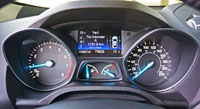
Speaking of advanced features, my test model boasted a $2,500 available Safe and Smart + Roof Package with features such as a panoramic glass sunroof, rain-sensing windshield wipers, auto high beams, adaptive cruise control, forward collision warning with automatic braking, blindspot monitoring with rear cross-traffic alert, as well as lane departure warning with lane keeping assist. Some of these items are also made available in a separate package when choosing one of the two mid-range models, so therefore you don’t have to go all the way up to top-line Titanium in order to experience high-level safety and convenience.
All of this detail in mind, I’m not about to delve into all standard and optional features with this outgoing SUV, because you’re not going to be able to order one this late in the game anyway. Still, other than the features already noted, Titanium trim adds 18-inch alloys, bi-Xenon HID headlamps with LED signatures, a heated steering wheel rim, an auto-dimming rearview mirror, front parking sonar, leather upholstery, a 110-volt power outlet, a foot-operated hands-free tailgate, plus more, while highlight items pulled from lower trims include additional chrome accents outside, a leather-clad steering wheel inside, a powered liftgate, rear parking sonar and more from SEL trim; fog lights, body-coloured exterior trim, proximity keyless entry with pushbutton start/stop, a combination lock entry keypad, one-touch up/down powered windows all-round, a 10-way powered driver’s seat, two-zone auto HVAC, heatable front seats and more from the SE; plus finally auto on/off headlights, a windshield wiper de-icer, remote start, keyless entry, MyKey, variable intermittent windshield wipers, power windows, air conditioning, an overhead console with a sunglasses holder, SOS Post-Crash Alert, all the expected airbags including one for the driver’s knees, and plenty more from the base S model.

A few highlights regarding Escape Titanium materials quality include an almost completely soft synthetic dash top that wraps all the way around the infotainment system’s control. This premium treatment softens the front door uppers too, while front and rear door inserts and armrests are finished even more comfortably, as is the centre armrest.
Ford beautifies the instrument panel with black lacquered surfacing that stretches to the right and left of the centre stack before reaching downward to each side, while this model also gets tasteful application of aluminum-look detailing, all of which added some glitz to my tester’s otherwise black interior. Certainly colour is included, but the two digital displays aside its small dashes of blue and red are relegated to the temperature knobs and the stylish baby blue instrument needles in the gauge package.
The seats look good, highlighted by what appears to be cream or light grey thread for a sporty contrast against black leather. I really appreciated the driver seat’s comfort level, particularly because of its adjustments, and the long reach and rake from the Escape’s manual tilt and telescopic steering column. As many who read my reviews know, my long-legged and short-torso body type doesn’t fit ideally into some manufacturer’s products, but such is not the case with the Escape. In fact, I think you’ll find it difficult to round up a challenger that provides more driver adjustment, while visibility is very good in all directions as well.

As usual I took the time to sit in back, where I found sizeable, comfortable accommodations. This said one doesn’t exactly sit within each outboard seat, but instead on top of them, so there’s not a lot of lateral support. Fortunately, relatively tall folk won’t have a problem with legroom or headroom as both are in large supply, while reclining the rear seatbacks can provide more of the latter. A folding centre armrest improves comfort further, while providing two cupholders for drinks. Also good, Ford makes sure passengers in back get ample ventilation via vents on the front console’s rear panel, this also housing the previously noted 110-volt power outlet, which incidentally comes with a third grounding socket for three-pronged plugs (not always the case). I was disappointed that Ford didn’t offer heated rear seats, particularly in this top-tier trim, but anyone wanting these types of premium accoutrements can opt for the Lincoln MKC (renamed Corsair for 2020), which is a 2019 Escape Titanium under all the luxury trappings.
The tailgate powers up by waving your foot under the back bumper, and once opened reveals a large 964-litre (34.0 cubic-foot) cargo hold aft of the 60/40 split-folding rear seats. Dropping these down provides up to 1,925 litres (68.0 cu ft) of gear-toting space, but on this note I’d much rather have more convenient 40/20/40 split-folding rear seats, or even a pass-through down the middle, because I like to ski and don’t want to leave my boards locked up in a less secure rooftop-mounted carrier. With a pass-through, both kids can enjoy the more comfortable and scenic outboard rear seats, while I get peace of mind when chowing down in the cafeteria or restaurant later. Still, this feature is ultra-rare in the mainstream volume-branded SUV sector, so while I complain (regularly), it probably wouldn’t be a dealmaker unless I liked the rest of the SUV as much as something else on the market that offered it. Absent features in mind, there are no levers on the cargo walls for automatically folding down the rear seatbacks, unlike a few competitors, but in order to be positive I’ll mention a handy flap the falls down over the gap between the seats and cargo floor in order to stop small items from slipping between the cracks, so to speak, and also good, the lengthened cargo floor is quite flat compared to most others.
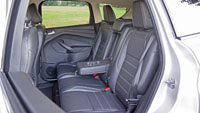
Just in case you’re beginning to think I’m getting too harsh with the old Escape, rest assured that it remains a very impressive compact SUV in most respects, and best in class when talking performance. Its transmission can be criticized for falling short of two or even three gears now that others in the class offer eight- and nine-speed automatics (including the 2020 Escape with the former, as noted), but the 2019 Escape’s six-speed autobox is amply smooth, refined and well-proven, plus my tester’s steering paddles provided a lot more engagement than most CVT-infused challengers do. Yes, all of SUVs mentioned so far use continuously variable transmissions, as do a number of others in the segment, and while highly efficient these also deliver continuous noise at high revs, as well as continual boredom when pushed hard. Instead, the Escape’s manual mode shifts genuine gears in comparatively quick and precise fashion, making Ford’s compact SUV a great deal more fun to drive fast.
Speaking of going fast, all Escape trims include torque-vectoring control as well as Curve Control, the latter capable of sensing if you’re driving to fast while entering a corner, and if so, automatically slowing you down via throttle reduction and the anti-lock brakes. I certainly didn’t notice anything going on in the background, and I pushed it very hard for testing purposes, so this electronic safety net is only intrusive when it needs to be.
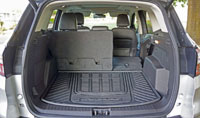
Then again, my Escape Titanium’s slightly firmer suspension and larger tires meant it wasn’t the smoothest riding SUV in its category. I wouldn’t call it harsh in the slightest, however, or uncomfortable at all, but I noticed more bumps and road imperfections than in the RAV4 or CR-V, which isolate occupants from pavement irregularities better. Still, this Escape Titanium will leave you smiling when pushed hard on a circuitous mountainside or riverside road, which is one of those difficult to quantify benefits that I happen to find priceless.
So there you have it, the outgoing 2019 Escape is well worth your attention. It continues to be a strong challenger despite its age, because it was so well engineered way back when. I think it’s still a smart choice for those wanting to keep their monthly budget in check, but can appreciate why someone might want to step up to the more advanced 2020 Escape or something else entirely. This said I can’t say for sure if its replacement will be worthy of more coin, as I haven’t even sat behind the wheel, but its mechanical improvements, including the new hybrid option, as well as its infotainment gains, appear well worth the upgrade. It’ll come down to personal priorities, like everything in life, so take some confidence in knowing you’ll be well taken care of with either new or old Escape.
Story credit: Trevor Hofmann
Photo credit: Karen Tuggay

